In the articles 3 Lies and 3 Truths about Biking through South Korea and Biking Through South Korea – Plan vs. Reality, I have told you a little bit about my journey by bike from Seoul to Busan.
Here are my personal highlights of the sights that were more or less along the way. They are in the order in which we saw them on our trip, not necessarily by order of preference.
Mongyang Lyuh Woon-Hyung Birthplace and Memorial Hall
In Sinwon, only about 50 kilometers outside of Seoul, was the first noteworthy cultural stop we made on our trip: Mongyang Lyuh Woon-Hyung Birthplace and Memorial Hall.
Mongyang was Mr. Lyuh’s pen name, his first name being WoonHyung. Like in China, Koreans also say a person’s last name first, then their first name. He was a Korean politician and activist (before that word became popular) fighting for Korean independence while the country was under Japanese rule, and later for the reunification of the two Koreas. He is regarded as a hero in both North and South Korea, a very rare thing.
By visiting the memorial hall dedicated to him and looking at his birthplace (which was moved to the place of the memorial hall and rebuilt on top of the building in a sort of rooftop garden), I personally learned quite a bit about modern Korean history. About how the country was invaded by the Japanese several times, only to be made a part of Japan in 1910 and until after World War II ended. About how the Korean people fought for their independence, first from the Chinese, then from Japanese rule.
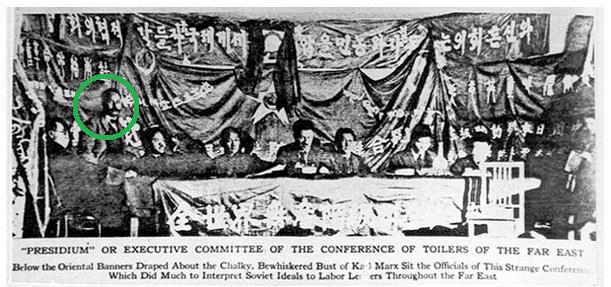
Lyuh Woon-Hyung was a multi-faceted and very intriguing man, who freed the slaves of his family when such a thing was just not done in Korea, who went to Nanjing to study English literature, founded a school, and who became a newspaper editor. When he was editor of the Chungang Daily News, his newspaper printed an altered photo of a Korean gold medalist in the Berlin Olympic Games. The paper had taken out the Japanese flag on the runner’s jersey before publishing it, and Lyuh went to prison for that highly political act of defiance of the Japanese authorities.

The memorial hall also had a photo booth where visitors can take a picture of themselves in front of a blue box and then insert their picture on one of a number of historical photographs of Lyuh Woon-Hyuong. The museum staff then print that out for you, and you get to take it home as a souvenir. Sounded like a grand plan, but, since I was wearing blue, I always showed up as a floating head in the shots. Quite creepy, actually!
Yoengneung – Royal Tomb of King Sejong the Great
The second stop on our tour that made a lasting impression on me was the Royal tomb of King Sejong the Great at Yoengneung. King Sejong the Great is one of the most revered royals in Korean history. Yoengneung is where his grave and that of his consort are located, along with a very modern and well-done museum on the Joseon dynasty.

While we were there, a portion of the museum and a large part of the park area were closed for renovation purposes. Sadly, this meant we did not get to see all of the exhibits and buildings strewn about the extensive grounds. On the plus side, it meant we got into the museum for free. And there was still a lot to see and even more to learn.
What impressed me the most were the computer animation explaining how a royal tomb was built during the Joseon dynasty. Korean tombs basically just look live very regular overgrown molehills or grassy bumps. But what is fascinating, is that there is an entire structure under the bump, which we cannot even fathom when looking at them from the outside. Seeing this changed the way I looked at every other burial mound we saw on our trip.
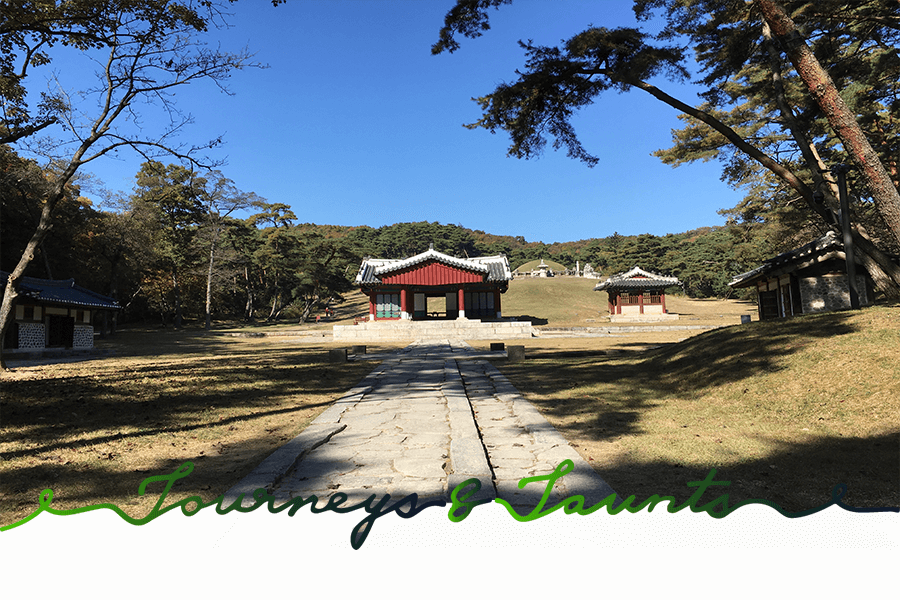
And the park with the actual tombs in it is absolutely beautiful as well. Of course, us being there when it was all cloaked in stunning fall foliage and bathed in soft afternoon light helped. But, that being said, traditional Korean architecture always aims at blending in with the scenery and complementing nature, no matter in which season. I could imagine that seeing the buildings in the snow, or with spring flowers around them, or surrounded by summer grass would be just as impressive.
Byeongsan Seowon
Another sight along the way I want to introduce to you is Byeongsan Seowon Confucian Academy. This place of learning was established in the 16th century by an esteemed Confucian scholar who was also the Prime Minister under the 14th of the Joseon kings. It only turned from an average place of learning to a Confucian academy after its founder, Ryu Seong-ryong passed away, and his followers built a shrine to commemorate him. A formal Confucian academy always encompasses both educational facilities and a shrine for memorial services.
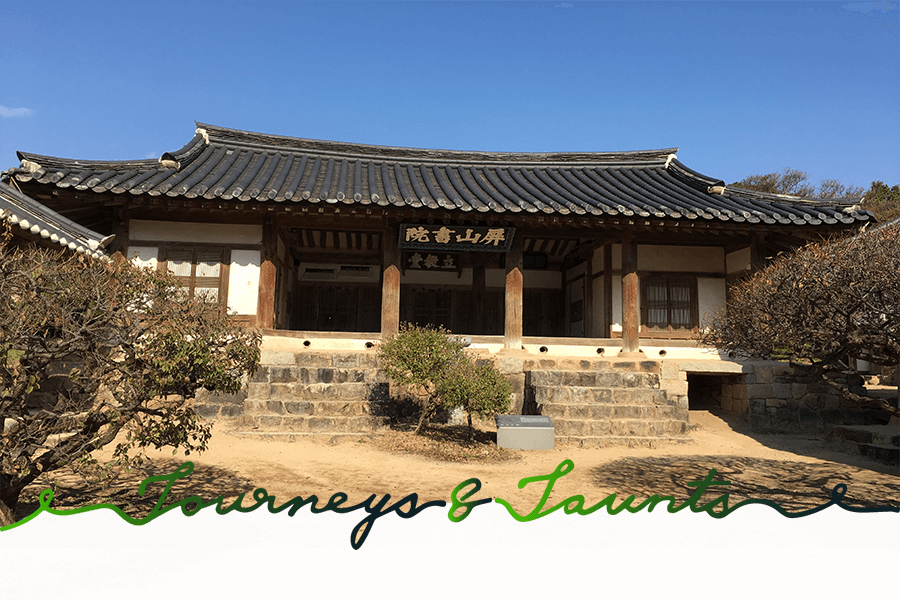
The Academy gained in prestige in 1863, when the Korean king Cheoljong gifted the institution with a hanging board for which he did the calligraphy himself. This honor turned Byeongsan Seowon into one of the royally chartered private academies. Its status rose further when it became one of only 47 private Confucian academies to remain open across the country when King Daewongun closed down most of the Confucian centers of learning in Korea in 1871.
Like most Confucian academies, Byeongsan Seowon was built to be in harmony with nature and blends beautifully with the surrounding countryside. The complex consists of: a main gate, by which you enter the grounds, Mandaeru pavilion, a lecture hall with dormitories for the students and teachers, and the residence of the caretaker to the rear; further, there are storage spaces for wooden printing blocks (which, before the printing press became used, was how Confucian scripts were duplicated) and relics. Behind all that is the gate leading to the shrine built in honor of Ryu Seong-ryong, along with a house where the scholars would prepare the sacrificial rites.
I really liked the peace and quiet at the academy, and the buildings are spectacularly well preserved. And, when leaving, I also discovered this 16th-century outhouse of (I think) quite modern design. Do you like it?
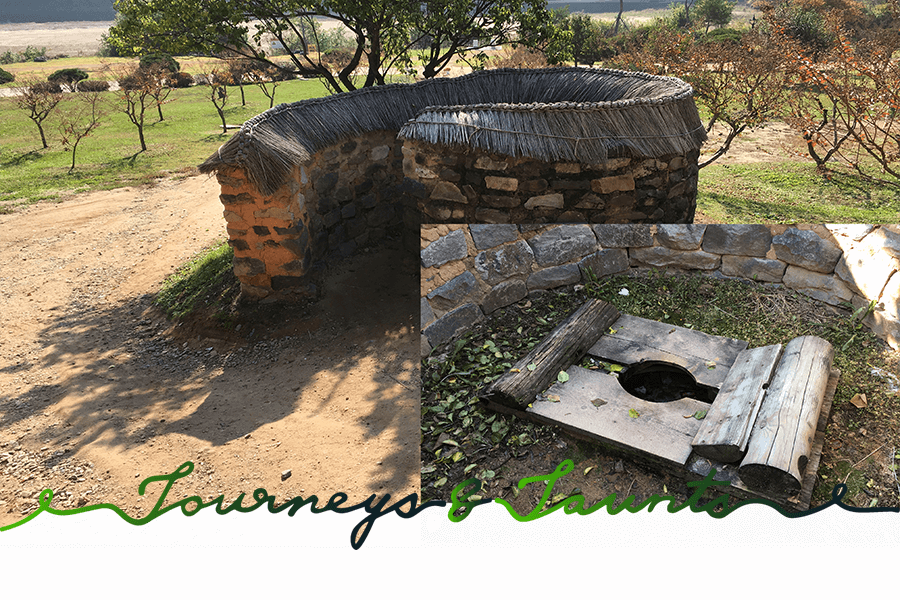
Andong
Andong is an average, modern, mid-sized Korean town embedded between small mountains, and separated by its main tourist attractions by a tunnel and steep slope. To get to Andong itself, we took off on a spike up one of the river paths, then took a bus back to where we started the next day (as you can read in Biking Through South Korea – Plan vs. Reality).
So, in theory, it should all have been a breeze, seeing as we even got to ride the bus… Unfortunately, Andong caught us at the lowest point in our bike journey. We visited the town when my friend Jasmin and I were both unenthusiastic, fed up, and exhausted.
That is why we ended up seeing way less of Andong than we should have. We skipped the Folk Museum, as we were just not motivated to go in. We only strolled around the different buildings taken from around the country and rebuilt in one spot to give an overview of architecture styles and took some pictures.
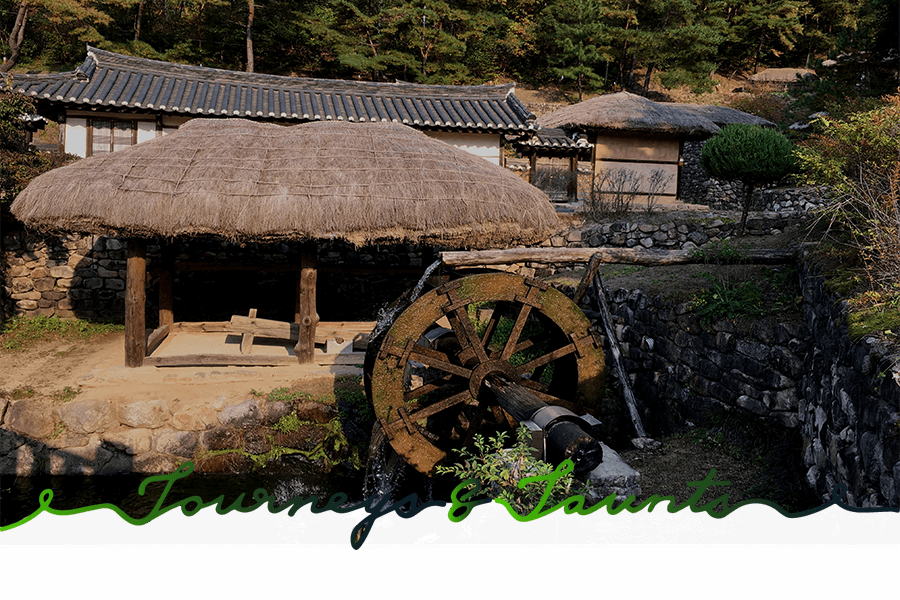
And we also skipped the Andong Mask Museum. The town is famed for its wooden masks, and there is a museum documenting how these masks are made as well as some spectacular examples of this Korean folk art. But, since going there would have involved another detour, and we had already struck out on the doll museum for which we deviated and which turned out to be closed, we stayed away. Going even further to another potentially locked door just did not appeal to us at that point.
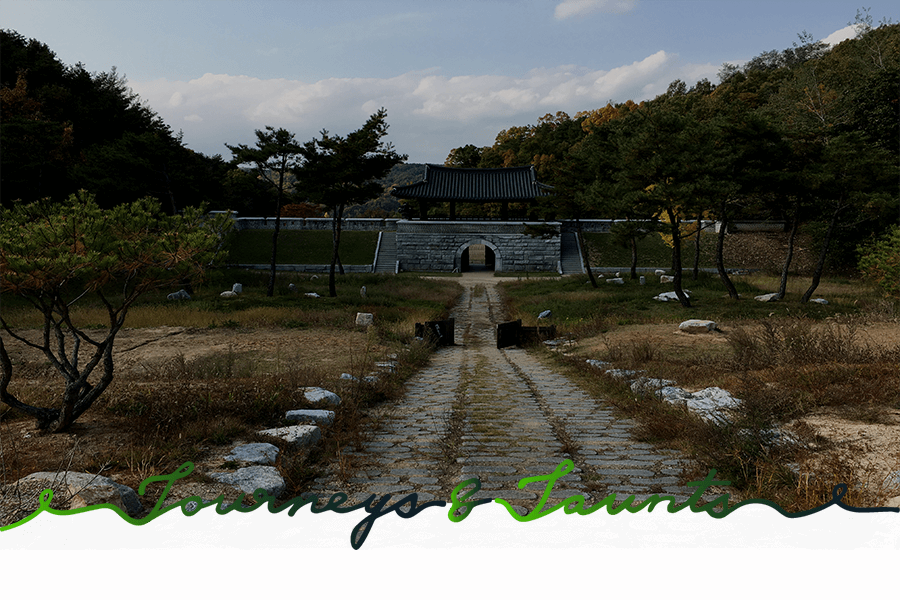
That being said, what we did see was still spectacular, as you can see from the pictures. And we both feel that it might have been a good idea to make Andong a 2-day stop so that we could have stashed our belongings and gone exploring either by bus or on our bikes, unburdened by the big packs. If you do what we missed – will you tell me about it?
ARC Cultural Center
The ARC Cultural Center is located right beside the bike path, so for once, there was no huge detour to get there. As I mentioned in 3 Lies and 3 Truths about Biking through South Korea, k water (the authority charged with providing drinking water to the Korean populace) is the entity behind the 4 rivers bike path project. This means that there are numerous attractions related to drinking water along the path.
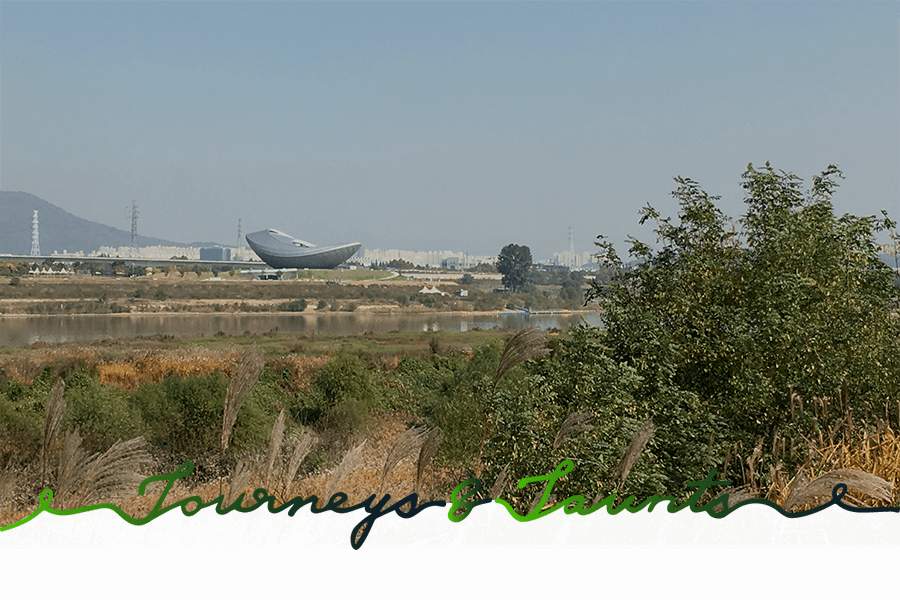
The ARC Cultural Center is one of them. An information center about drinking water in Korea, it holds everything from a record of poems and songs about water in Korean culture to information boards with water statistics for Korea and comparisons with other countries worldwide.
The most fun part of ARC Cultural Center, though, is a number of interactive exhibits for visitors to play with. My favorite one was a giant touchscreen with virtual water dripping down in one steady stream. With your finger, you could create hills or depressions over which the water would flow or in which it would pool. After a couple of seconds, the area around your pools would start sprouting grass and fish would appear in them. A virtual eraser would let you make changes to see how the water would react and a click on the reset button allowed you to begin all over again.
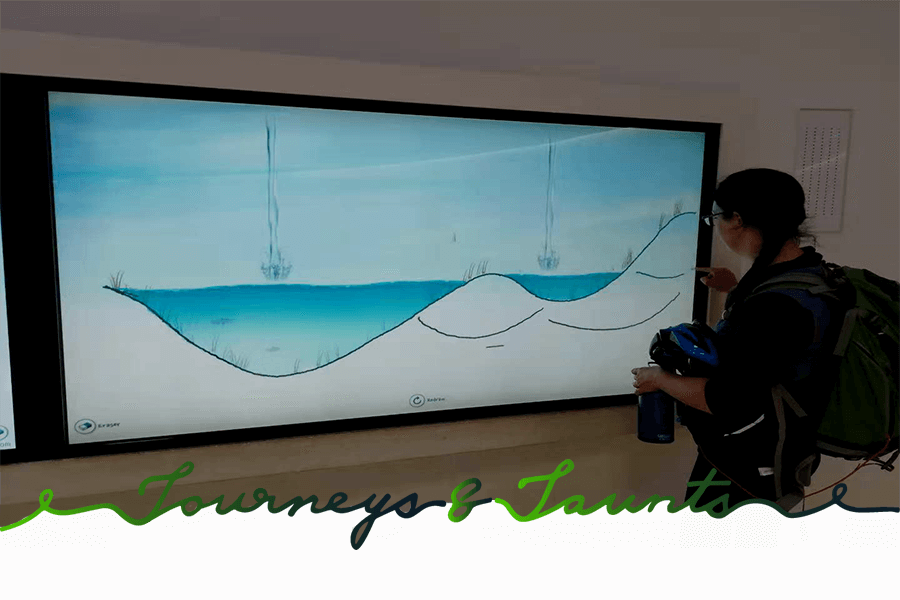
Oh, you want to know how long I was glued to that toy? I’d rather not say, actually…
Daegaya History Theme Tourist Site
With its museum and historic sites strewn over a relatively small area, Daegaya History Theme Tourist Site has it all for history buffs.
The museum gives a beautiful overview of the Daegaya Kingdom (1st to 6th century AD) and shows off some artifacts from the over 700 tombs that have been found in that spot. Daegaya is a period of Korean history that is not all that well-known even to many in the country itself, so this was a real treat for me. Many of the tombs have not even been opened yet. This means the collection of the museum is sure to grow further in the years to come.
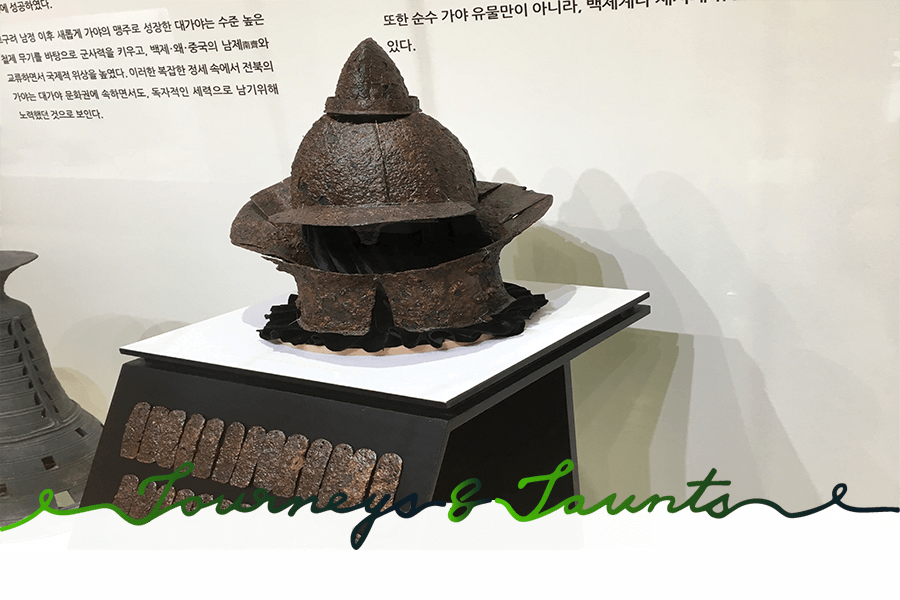
There is also a dome where you can observe the process of excavation of the tombs of the Daegaya. The place was under construction when we visited, but we snuck in anyway. Not because we are bad, bad tourists, but because we were not aware it was closed to the public – the beauty of not being able to read Korean. Even being in the throes of remodeling, it was quite impressive.
Taking a stroll up the hills to see all the bumps which hide more tombs is breathtaking – and not just because of the steep incline. Seeing these bumps all over the place like too regular rolling hills and knowing each and every one of them holds an untold number of historical artifacts set my history nerd heart all aflutter.
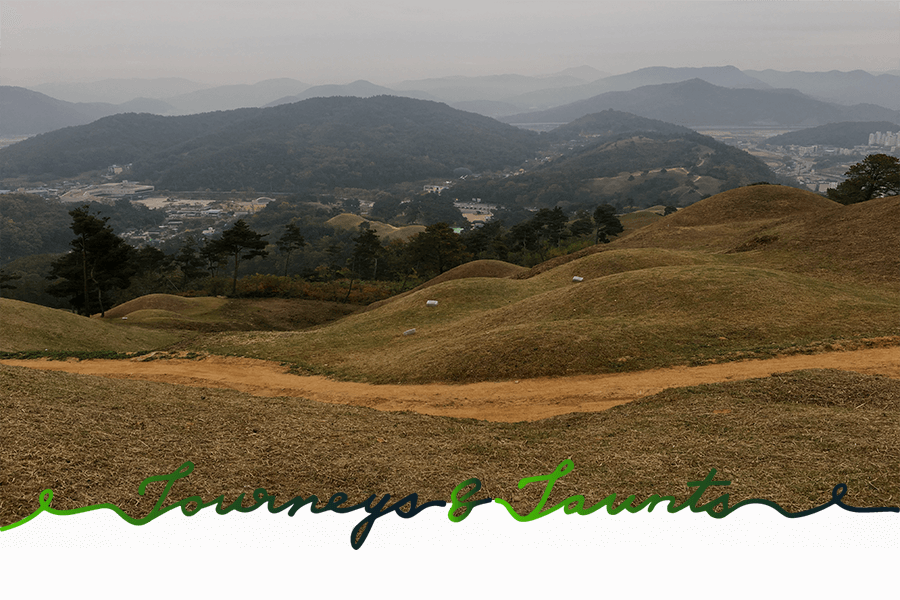
If we had to make this trip over again, though, I would schedule a 1-night stop near Daegaya Historic Theme Tourist Site to drink it all in. This way, we would not have been as rushed to get through the museum, would have been able to wander around the vast area some more. There are stones with inscriptions we didn’t even hike out to, and some more vistas of burial mounds that we missed. But, since we were always thinking of the climb back up the hill and how to get to the next campsite, it was probably better this way.
Then, of course, there are Busan and Seoul. But I feel there are so many things to see there that they merit their own post. Or posts. What do you think? Let me know in the comments!




